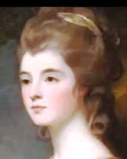Presents
Adalbert Gyrowetz
Grand Trio in E flat Major, Op.43
For Piano, Clarintet or Violin, and Cello or Viola
To paraphrase the Professor Bruce Lamott, Adalbert Gyrowetz (1763-1850) was the "Zelig" of music history. Like the lead character of Woody Allen's movie Zelig, Gyrowetz was everywhere and knew everyone worth knowing. He was born in the Bohemian town Budweis, then part of the Austrian Habsburg empire and today known as Budějovice in the Czech Republic. He is sometimes, though not often, known by the Czech form of his name Vojtěch Jírovec. He studied violin and voice with his father, a choirmaster. Gyrowetz traveled throughout Europe, residing for periods in Vienna, Paris, London, Rome, Naples and several other major European cities. Among his friends and acquaintances were Haydn, Mozart, Beethoven, Chopin, Goethe and Napoleon to name but a few. His style closely resembles that of Haydn and several of his symphonies were published under Haydn's name by unscrupulous publishers trying to make an extra buck. Mozart thought enough of Gyrowetz's symphonies to perform several of them at concerts in Vienna. Gyrowetz, like most of his contemporaries, was a prolific composer writing some 400 works, among them 60 symphonies, and hundreds of chamber works including approximately 60 string quartets. While today, he has been forgotten and his music consigned to oblivion, this was not always the case. A close friend of both Haydn and Beethoven--he was a pallbearer at Ludwig's funeral--his music was held in respect and frequently performed on the same programs with theirs throughout Europe and even in North America.
 Gyrowetz’s
Op.43 was published in 1801 in Vienna by the Bureau des Arts et Industrie. The
title page to the piano part states that the work is for pianoforte, clarinet or
violin and violoncello. No doubt the publisher was interested in increasing
sales and a work for clarinet trio was less likely to sell as many copies as a
work for a standard piano trio and hence the publisher specified it could also
be played by violin. However, it should be noted that Grrowetz was also thinking
of the work as a standarad piano trio because there actually manuscript violin
part written by Gyrowetz. The work is in three movements, Allegro moderato,
Andante and Allegretto. It is no accident that the piano part is quite prominent
and requires a pianist of good technique. This is because the dedicatee was one
Josepha Barbara Auernhammer (1758-1820) who was, at least in Vienna, as
well-known as Gyrowetz. She studied piano with Leopold Kozeluch and Mozart, with
whom she fell in love. Of her, Mozart wrote: “I'm with Fraulein v. Auerhammer
almost every day after dinner;– the girl is a beast!—but plays to delight.”
In that year, Mozart dedicated his sonatas for piano and violin K. 296 and K.
376-380 to her. She often played alongside Mozart in concerts in his Sonata for
2 Pianos, K.448 and also the Double Piano Concerto K.365. She was one of the
first to perform Beethoven’s Piano Concerto No.1 in concert to outstanding
reviews.
Gyrowetz’s
Op.43 was published in 1801 in Vienna by the Bureau des Arts et Industrie. The
title page to the piano part states that the work is for pianoforte, clarinet or
violin and violoncello. No doubt the publisher was interested in increasing
sales and a work for clarinet trio was less likely to sell as many copies as a
work for a standard piano trio and hence the publisher specified it could also
be played by violin. However, it should be noted that Grrowetz was also thinking
of the work as a standarad piano trio because there actually manuscript violin
part written by Gyrowetz. The work is in three movements, Allegro moderato,
Andante and Allegretto. It is no accident that the piano part is quite prominent
and requires a pianist of good technique. This is because the dedicatee was one
Josepha Barbara Auernhammer (1758-1820) who was, at least in Vienna, as
well-known as Gyrowetz. She studied piano with Leopold Kozeluch and Mozart, with
whom she fell in love. Of her, Mozart wrote: “I'm with Fraulein v. Auerhammer
almost every day after dinner;– the girl is a beast!—but plays to delight.”
In that year, Mozart dedicated his sonatas for piano and violin K. 296 and K.
376-380 to her. She often played alongside Mozart in concerts in his Sonata for
2 Pianos, K.448 and also the Double Piano Concerto K.365. She was one of the
first to perform Beethoven’s Piano Concerto No.1 in concert to outstanding
reviews.
| (A) Clarintet, Cello & Piano | $29.95 |
|
| (B) Clarinet, Viola & Piano | $29.95 |
|
| (C) Violin, Cello & Piano | $29.95 |
|
| (D) Violin Viola & Piano | $29.95 |
|
| (E) All Five Parts | $39.95 |
|
This trio is not only historically important because it sheds light on what other then important composers were doing at the time in Vienna but also because it is pleasing to play and hear.